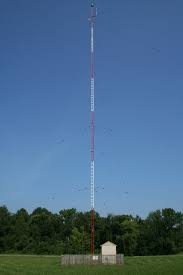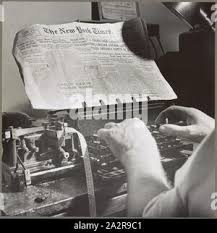Welcome to the July issue of Blog Logs. Thank you for your emails, your logging contributions, and following my latest daily tweets on X at Shortwave Central (Gayle Van Horn W4GVH)
@QSLRptMT
Have you subscribed to the Shortwave Central YouTube channel? You will find a vast selection
The Shortwave Central blog brings you the latest from the ever-changing realm of radio. Additional radio information is covered in my
Bits & Bytes monthly column in
The Spectrum Monitor e-zine at:
https://www.thespectrummonitor.com/
Languages as indicated
// denotes the station heard on a parallel frequency
*Sign-on Sign-Off*/ frequencies in kHz
Monitoring June 5-29, 2025
UTC, frequencies kHz
Mediumwave
Brazil
1110, Rádio Cancão da Divin Providência, Paulinia SP. Portuguese identification “ZYK768” followed by station name …”A Voz do Brasil” at 2200. SINPO 24432. (Rudolf Grimm, São Bernardo SP, Brazil).
Uruguay
1170, Radio Mundo, Montevideo. Spanish talk, ads, and Sports News to ”esta es Radiomundo Montevideo deportes…” SINPO 25442 (Grimm).
Shortwave
Algeria
17600, Ifrikya FM, Bechar, 0830-0906. English news and comments about the Sahara, to African songs, and English comments. Station ID “Ifrikya FM, la voix Africaine.” French comments to 0900 Arabic text // 17600. SINPO 35433 (Manuel Méndez, Spain/BDXC).
Ascension Island
17830, BBC World Service relay at 1855. Sports chat to station ID. Newscast at 1900 amid very poor signal quality. (SIO 222(. (G Van Horn/ LA Airspy HF+Discovery.).
17780, BBCWS relay, 1701-1711. English service and conversations to BBC identification. Good reception SINPO 45554 (José Ronaldo Xavier/Brazil/HCDX)
Website:
https://www.bbc.co.uk/
Australia
11870 via Kunumurra, Reach Beyond Australia 1500-1530. Burmese service as indicated on schedule, featuring religious music and text. Closing with station information at 1530. Station website: https://www.reachbeyond.org.au/
YouTube video:
https://youtu.be/dID-tLDKe58
Bolivia
3310, Radio Mosoj Chaski, Catapatchi 0048-0055. Barely there with rustic Andean music and presumed Quechua announcement. SINPO 32222. (Van Horn/ LA Airspy HF+Discovery) 3310, 0028-0036 in Quechua comments. SINPO 15422 Also heard 0602-0633 with religious songs and comments. SINPO 25322. (Méndez)
Brazil (Portuguese)
6010, Rádio Inconfidencia, Belo Horizonte 0440-0533. Brazilian songs // 15189.9, SINPO 15421. Additional Brazilian stations noted as:
6150, Rádio Saturno, Belo Horizonte, 0438-0519 with Portuguese comments and music. SINPO 15422.
.JPG) |
| AirSpy screen capture during broadcast |
6180, Rádio Nacional da Amazonia, Brasilia 2029-2042. More Brazilian songs // 11780. SINPO 25422.
9818.5 Rádio 9 de Julho, São Paulo, 2011-2033. Religious comments and music.(Méndez).
China
15760, 1645-1705. CNR 1/Voice of China via Qiqihar. Chinese text to Asian easy-listening instrumentals to signal time tips at 1658. Announcer’s text and chat. (G Van Horn/ LA Airspy HF+Discovery)
Additional monitoring China: 13710
China Radio International at 1620-1630 via Kunming-Anning. Turkish service, including conversations for poor reception. Heard CRI on 13790 via Kashi/Kashgar. Arabic service at 1650 for poor reception. SINPO 35432. CRI on 15250, 1609-1619 via Urumqi in English with a lady’s interview. Poor reception, SINPO 25532 (Xavier/HCDX)
Website: https://english.cri.cn/
Clandestine
11640 Radio Dabanga via Talata-Volonondry. Sudanese service at 1735. Announcers talk to drums and flute music, sung by children. Mentions of programming “to Sudan”. (Grimm).
Cuba
5025, Radio Rebelde 0110-0120. Spanish talk, promos, and announcements. Very good signal (Van Horn/ LA Airspy HF+Discovery( Rebelde on 5025, 0435-0516 with Cuban music program (Méndez). Very weak signal for Radio Habana on 6000 at 0431 in Spanish. (Harold Sellers, Canada/Comm Radio CR-1A)
Denmark
5930, World Music Radio, Bramming, 2014-2035. Latin American and other featured music // 15700. SINPO 25422. WMR via Randers 15700, 0632-0715. Flute music, English pops to Latin American tune. Station ID “World Music Radio” SINPO 45444 (Méndez)
.Website:
https://www.wmr.dk/
Ecuador
.JPG) |
| AirSpy screen capture during broadcast |
6050, HCJB. 0110-0125. Spanish biblical readings.. SINPO 43433. Programming at 0215 from Alex Rodriguez’s tune Alabanza.. Possible Quechua talk about programming.to 0235 closure. Additional monitoring on this frequency from 0010. Praise music into Spanish religious text, station monitored to 0210. (Van Horn/LA/AirSpy HF+Discovery)
Finland
6120, Radio Blacksmith Knoll, Pori 1941-2000. English pop tunes to comments. Very weak. At 2000, eclipsed by very strong noise – likely DRM on frequency. Finland’s
Scandinavian Weekend Radio on 11690, 2003-2027 // 11720. Freq 11690 via Virrat 0455-0534 in Finnish and English station ID. (Méndez).
Website: www.swradio.net Why did this station STOP QSLing ??
France
 |
| Classic RFI QSL |
15300, Radio France International at 0417. French programming of fair signal // 11700 poor. (Sellers). RFI 17620, 1641-1650 via Issoudun. Hausa service with news and ID. Program interview, additional news for good reception. SINPO 45544 (Xavier).
NHK World Radio Japan via France relay on 17830 at 1435. Comments from male/female announcers to instrumental music. The target area is the Middle East. SINPO 15321 (Grimm).
Guam
15215, Adventist World Radio in Hindi at 1532. Christian song and announcer’s text. The target area is Northern Indonesia. SINPO 25442. Noted on 15710 in Mandarin at 1450. Christina music. No interval signal observed at the end of transmission. SINPO 25222. The target area is China (Grimm).
Website:
www.awr.org
India
.JPG) |
| Classic All India Radio QSL |
9620, Akashvani 1840. Arabic service from 1840 tune-in. Indian vocals program and Arabic announcements. (Sam Wright, MS) 15410 Akashavani at 0304. Brief musical interlude to Elton John’s
Candle in the Wind song. Additional Nepali service talk and musical tunes. (Paul Walker, AK). Live audio
https://akashvani.gov.in/radio/live.php
Iran
15240, Pars Today-VO Islamic Rep of Iran. Arabic service, monitored from 120-1535. Two males discussing Tehran/Tel Aviv during the Israeli/Iran conflict.
YouTube video available at:
https://youtu.be/Yr19_uO0taQ (Van Horn/Kiwi Iraq SDR)
Website:
https://parstoday.ir/en
Madagascar
12095, BBC World Service at 0400. English service relay with news headlines from around the world. Poor signal quality. Madagascar’s African Pathways Radio on 13760 at 0315. English program of pop music and Bible scriptures, and on 11825 English This Day in History at 0402. (Sellers).
Mexico
.JPG) |
| AirSpy screen capture during broadcast |
6185, XEPPM-Radio Educacion. 0115-0125 Evening music program of Spanish ballads with guitar accompaniment. Very good signal SINPO 43434 (Van Horn/ LA Airspy HF+Discovery) Station
website: https://radioeducacion.edu.mx/
New Zealand
7440 via Rangitaiki, RNZ Pacific 1500-1505. Opening time tips signal to announcers’ good morning intros. English national news topics, sports report, program previews, weather forecast, and special segments. Station ID at 1505 as “RN National.” Station website:
https://www.rnz.co.nz/ (Van Horn, LA/Kiwi Australia SDR)
YouTube video:
http://youtu.be/RKp_3nARi0
Philippines
15450, FEBC Manila, Bocaue, Rakhine. Tentative at 1417 with Christian broadcast included music and text. SINPO 25432, a program targeted to Southeast Asia (Grimm).
Website:
https://febc.ph/
Spain
.JPG) |
| AirSpy screen capture during broadcast |
17715, Radio Exterior Espana 1902-1915. Spanish service: Male/female trade news items. Station ID/promo at 1904. Local talk on events “Radio Nacional de Espana" ID/promo to local time check. Continued chat and phone-in's. Schedule Monday-Friday. (G Van Horn/ LA Airspy HF+Discovery) // 15520. Poor signal on 15520, 1645-1650.
United Arab Emirates
United States
17790, Radio Africa via WRMI from 1835 tune in to the lady's French text. to instrumental music 1843-1845. Vocal choir hymn from 1845. English religious discussion as "Has Christianity failed?" (SINPO 33223) Monitored to 1850. (Van Horn/ LA Airspy HF+Discovery).
 |
| Classic WINB QSL |
9265, WINB 2025-2035. Religious sermon and prayer during the Call to Worship program. Praise music to program promotional. Vintage gospel hymns to 2035. SINPO 33333 (G Van Horn/ LA Airspy HF+Discovery.)
9330, World's Last Chance via WBCQ 2010-2025. Announcer’s discussion on book of John, Chapter 3. Promotional for religious publication, with continued discussion on Yaweh from two hosts. SINPO 43343. (Van Horn/ LA Airspy HF+Discovery.)
9395, Supreme Masters TV via WRMI. 2002-2010. Lady's station information and address to male's intro. Text on taking your spiritual path. Website information to news about China's relations with USA. SINPO 33333. (Van Horn/ LA Airspy HF+Discovery.)
.JPG) |
| | AirSpy screen capture during broadcast |
|
9930, Overcomer Ministries via WRMI. 1940-2000. Some of the last programming from classic Brother Stair broadcast, preaching on the Tribulation, with listeners' letters and questions. Gospel vocal hymns to 1945. Recorded classic scriptures to vintage gospel hymns. Discussion about Peter's early ministry to a replay from a 1987 sermon. Audible with similar Brother Stair format via WWCR on 9350, 2005-2025. (Van Horn/ LA Airspy HF+Discovery.) WRMI's Alameda Bible Fellowship on 5010, 0105-0110 with biblical scriptures from 1st Samuel. Very good signal. (Van Horn/ LA Airspy HF+Discovery)
11875, KNLS Anchor Point, Alaska *0800-0810. Chinese service and comments. SINPO 15422 (Méndez).
Website:
www.knls.org
13845, WWCR Nashville, TN. 1620-1630 Today's Creation Moment from 1626 with comments on human evolution. Promo for study material. Station ID at 1628. Bible study from the books of Isiah and Hebrews. (Van Horn/ LA Airspy HF+Discovery.)
Website:
https://www.wwcr.com/
.JPG)
.JPG)


.JPG)

.JPG)

.JPG)
.JPG)
.JPG)

.JPG)





%20QSL.jpg)




.JPG)












.jpg)
